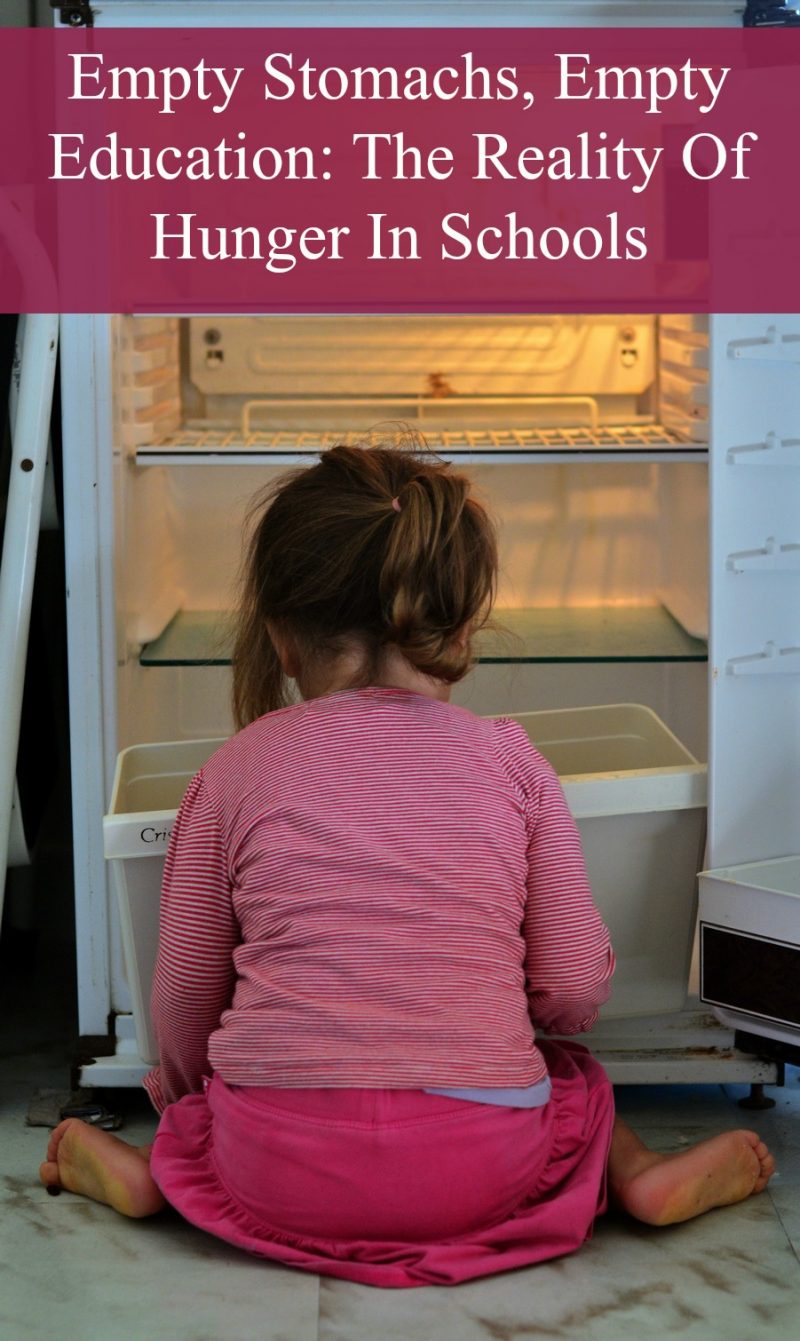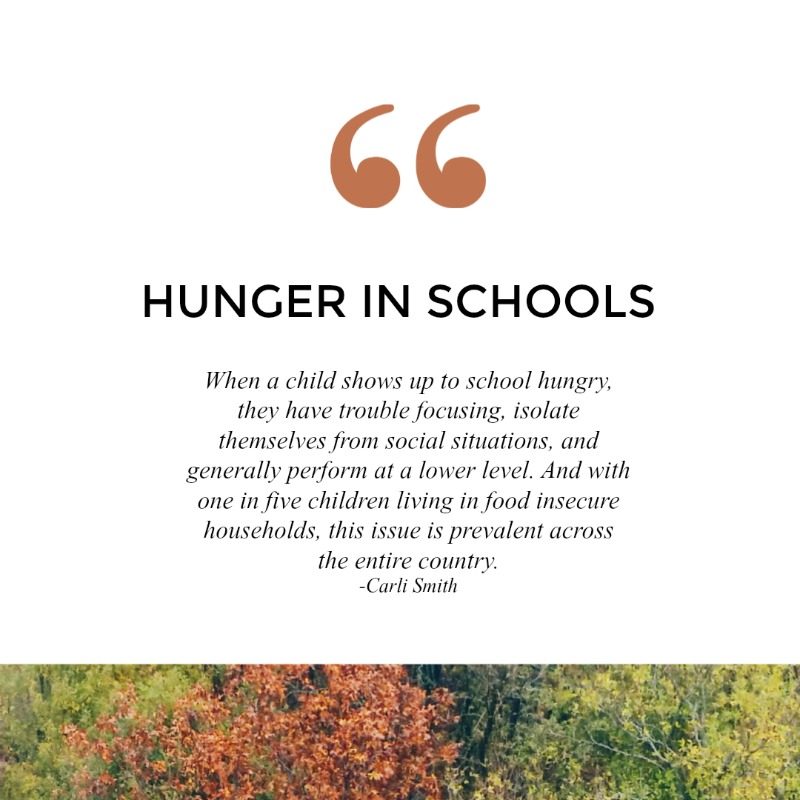For many American children, school is a nurturing environment full of learning, socializing, and enrichment. A child should be able to sit down at school, ready to participate fully and advance their education. But for some of America’s youngest citizens, this is not the reality.
For 13 million children across the United States, hunger is the biggest barrier to their education.
When a child shows up to school hungry, they have trouble focusing, isolate themselves from social situations, and generally perform at a lower level. And with one in five children living in food insecure households, this issue is prevalent across the entire country.
“There are food insecure and hungry kids in every Congressional district and every demographic,” Lucy Melcher, the director of advocacy and government relations for Share Our Strength said in a statement to The Washington Post. “Food insecurity is a family that has enough money to buy groceries three out of four weeks; it’s a mom skipping dinner; it’s having to choose between buying groceries and paying rent.”
By understanding the scope of hunger in schools and gathering resources to take action, you can help combat this issue in your own community. This will get every food insecure child one step closer to having access to wholesome, nutritious meals.
What Is The Impact Of Hunger In Schools?
Childhood hunger is more than just a grumbling stomach. Sitting in a classroom while hungry has serious physical and mental effects that directly impact school performance and the child’s development. The following are some of the most common effects of childhood hunger in schools.
- Hindered School Performance
When children are well fed, their brains have the nutrients necessary for processing information and functioning fully. Children who are hungry cannot access this full cognitive function. Rather, they have lower math scores and are more likely to come to school late, according to the National Education Association. They may also have difficulty concentrating on subject matter and processing new information.
- Increased Illness
The food we eat is directly tied to overall wellness, and many children are disadvantaged by their lack of food. When a child does not have access to proper nutrition, they are more likely to miss school because of an illness. And since these sick days add up, this causes the child to fall behind academically even more.
- Lower Graduation Rates
This lag in academic performance also leads to a higher dropout rate for food insecure children. When children don’t finish high school, they go on to work lower paying jobs and may become food insecure adults. This contributes to the cycle of poverty that causes childhood hunger in the first place.
- Poor Mental Health
According to the American Psychological Association, severe hunger is linked to anxiety and depression in kids. And down the line, this lack of food access can lead to depression or suicidality in adolescents. In addition to these mental illnesses, children may also suffer from the stigma of being food insecure.
While every child will experience the effects of hunger differently, there are common threads that impact most food insecure kids. These young learners struggle to pay attention in school and lag behind. This puts them at a disadvantage for their futures, potentially continuing a cycle of hunger for their own children.
What Can You Do About Childhood Hunger?
Knowing the prevalence of childhood hunger in U.S. schools, you may be eager to take action. Fortunately, there are plenty of ways to get involved in hunger relief efforts right in your community. From government programs to local food drives, efforts to combat hunger are more prevalent than you realize. The key is to boost them.
Here are some ways that you can lend a hand and make your voice heard in the fight against childhood hunger:
- Support Government Programs
The Supplemental Nutrition Assistance Program (SNAP), more commonly known as Food Stamps, is one of the most prominent nutritional assistance programs in the United States. Women, Infants, and Children (WIC) is another important program that provides nutritional education to pregnant, breastfeeding, and non-breastfeeding low-income women and their families. To help support these programs, you can contact your congressional representatives and encourage them to vote in favor of nutritional assistance and education.
- Volunteer At A Food Drive
You might consider volunteering your time at a local food drive or food cupboard. If you don’t see one in your area, get a group together and organize one. There may also be opportunities to volunteer directly with local schools and work with food insecure families to support their nutritional needs.
- Support Local Programs
As a result of the National School Lunch Program, many schools offer free meals to their students before, during, and after school. Contact schools in your area and ask about their free breakfast and lunch programs. Consider attending school board meetings to get involved or advocate for programs like this. There might be a committee dedicated to this cause, or you may want to start one yourself.
While these types of programs have proved effective in tackling national childhood hunger, there is still room for growth.
“According to No Kid Hungry, a quarter of all low-income parents worry their kids don’t have enough to eat between school lunch and breakfast the next day; and three out of four public school teachers say students regularly come to school hungry,” Jamie Seaton writes in The Washington Post. “Increasingly, advocates are focusing on programs that ensure kids have enough to eat when they are not in school, and after school and summer meal programs are on the rise.”
As children struggle to learn despite their grumbling tummies and go home not knowing if they will get a meal, you can take on an advocacy role. By spreading the word and volunteering your time, you can be an ally for the 13 million kids directly impacted by this issue. As awareness grows, we could see more and more children with food on their plates.
And with food on their plates, these children can access a more fulfilling future.
About the Author






I worked in a school cafeteria I have seen hungry children. Sometimes the parent (s) need to get out of bed and get their child to school early enough to eat a good breakfast.
I worked in a school cafeteria and have seen the hungry kids. Sometimes it’s the parents fault for not getting their children to school early enough to eat breakfast.
It’s a tragedy that this is still going on in today’s school system. No kid should go hungry.
Thanks for sharing great article
The number of hungry children is absolutely staggering!
In lieu of birthday party gifts, please ask guests to donate to charities. Click on the blog link for a list of charities https://partyplanning.xyz/charities/